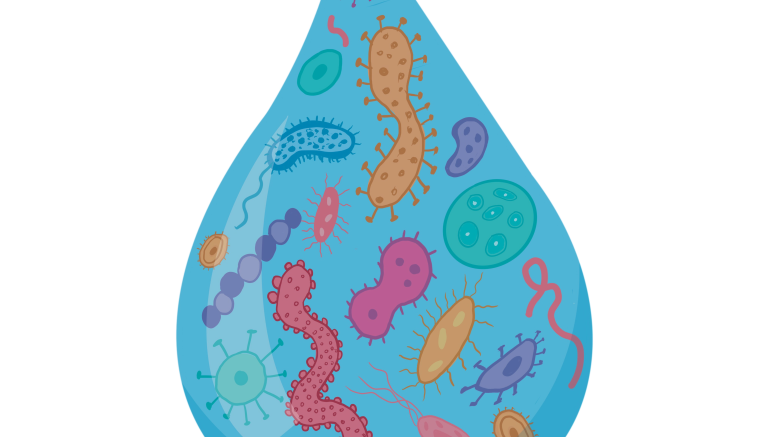In 2018, the University of Manitoba was named the United Nations Academic Impact (UNAI) Hub for Sustainable Development Goal (SDG) 6 — clean water and sanitation.
As part of its Last Drop UNAI Speaker Series, the U of M hosted a seminar last Monday titled “Microbiological quality of drinking water from First Nation communities in Manitoba and an urgent need to upgrade the water distribution system.”
The talk, presented by U of M associate professor in the department of microbiology Ayush Kumar, addressed water quality disparities in First Nations communities in Manitoba.
Water contamination, often driven by microbial factors, poses serious health risks. Contaminated water can harbour bacteria and viruses, serving as a source of infectious diseases. Kumar noted that access to clean water or a lack thereof has a direct correlation with life expectancy.
Drinking water advisories are precautionary measures aimed at safeguarding individuals from drinking contaminated water. These include boil water advisories, do not consume advisories and do not use advisories.
“There are communities out there which have one or more of these advisories ongoing at the time,” Kumar said.
Advisories that persist for over a year, known as long-term drinking water advisories, have been a focal point for government efforts to ensure safe drinking water in Indigenous communities.
Recent data suggests that progress has been made, with the number of long-term advisories in Canada decreasing. For example, there are now five remaining advisories in Saskatchewan, three in Manitoba and 20 in Ontario, totaling 28 across the country. This marks a substantial reduction from the more than 120 advisories that existed in 2015.
However, the numbers alone do not tell the whole story.
“This is not the complete picture when it comes to the quality, or the lack of it, of drinking water in First Nation communities,” Kumar said.
Many Indigenous communities depend on private water sources, well systems and residences without water services. Kumar highlighted that there are no established systems used in monitoring the water quality within these households yet. This critical gap led to a collaboration between researchers and community members to collect and analyze water samples and microbial quality of water from various Indigenous communities.
Kumar pointed out that none of these communities were under any drinking water advisory, long-term or otherwise. Additionally, they all had water treatment plants and a mix of water distribution systems, including pipelines and water truck deliveries.
The collaborative study focused on two bacteria that are key markers of microbial contamination — coliforms and E. coli. While coliforms are not always pathogenic, their presence indicates fecal contamination, which can carry disease-causing organisms.
“The guidelines say that drinking water — to be safe for drinking — should not have a single coliform or E. coli,” Kumar said.
However, the tap water samples collected from these communities did contain coliforms. Although the water treatment plants effectively removed these bacteria, the bacteria reappeared in the distribution system, indicating potential recontamination.
To gain a deeper understanding, Kumar and his team conducted microbial community analysis, similar to fingerprinting, to identify the types of microbes present. The results showed a clear difference in microbial profiles between an untreated source water and system water, suggesting that contamination was not originating from the source.
The study also examined antibiotic resistance genes in water samples. Antibiotic resistance is a growing global concern, and resistance genes can be present in water sources.
According to Kumar, “The impact of resistance is very widespread when it comes to health of the community and health-care system.”
Kumar found the presence of antibiotic resistance genes in system water samples. Additionally, system water samples stored in various materials like cement and plastic tanks consistently showed higher bacterial counts and antibiotic resistance genes.
“What this is telling us is that we need to have a policy in place to ensure that these systems are cleaned in a timely manner,” Kumar said.
Kumar also looked at the presence of campylobacter, a pathogenic bacteria that causes severe gastrointestinal tract infections. Typically, these infections have been linked to the consumption of raw or undercooked pork and poultry. However, the study detected campylobacter genes in water samples, even in samples that showed no signs of E. coli or coliform contamination.
For Kumar, this shows that “if we have to target one aspect of water distribution system, or if we have to prioritize one aspect of water distribution system, we have to look very carefully at water storage in these systems.”
While progress has been made in reducing long-term drinking water advisories, the complexities of water quality in Indigenous communities extend far beyond advisory labels. System water quality, microbial contamination and antibiotic resistance remain significant concerns.
Kumar emphasized the importance of sharing data and community engagement in fostering a deeper understanding of water quality issues and ensuring access to clean and safe drinking water.
“Systems are probably the biggest health risk when it comes to access to safe water,” he said, “and this is something that needs to be addressed.”




